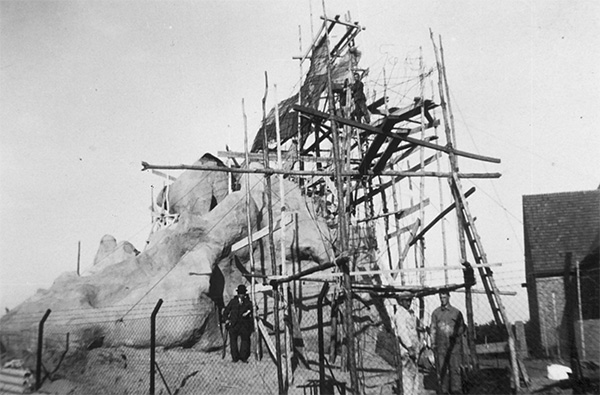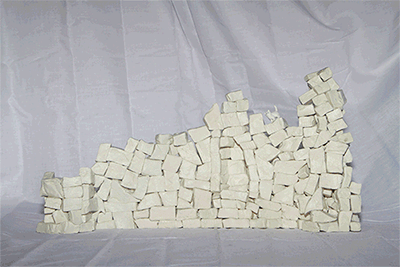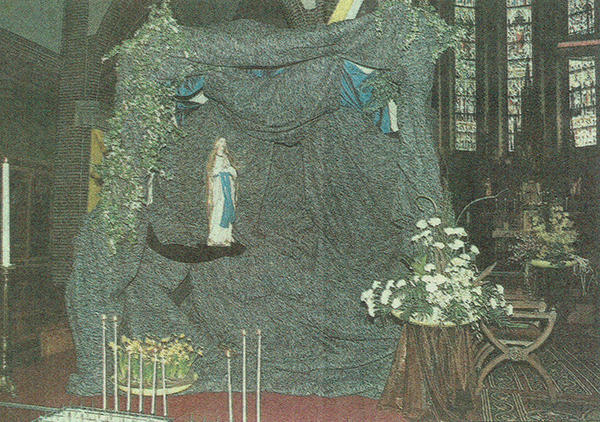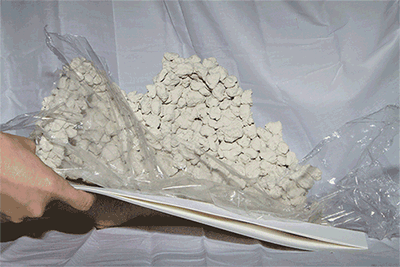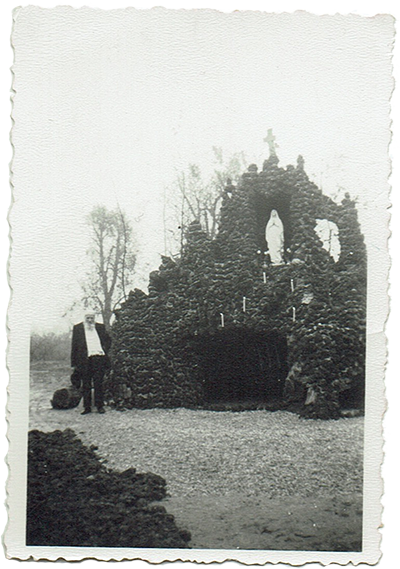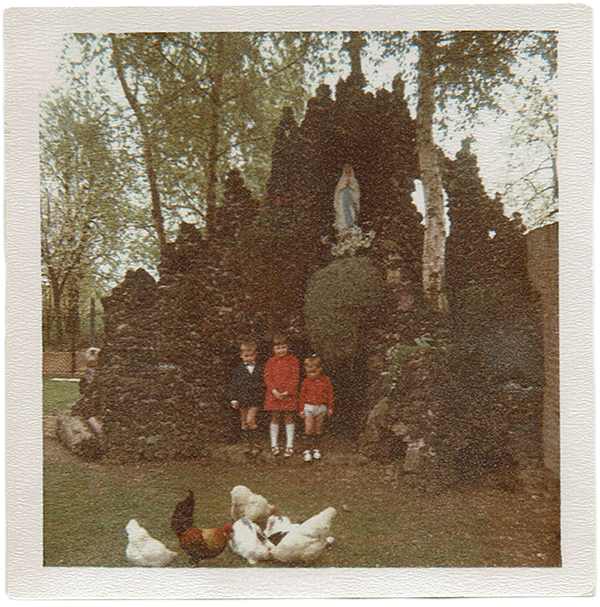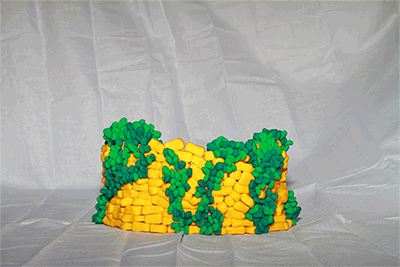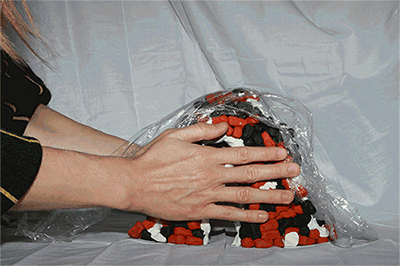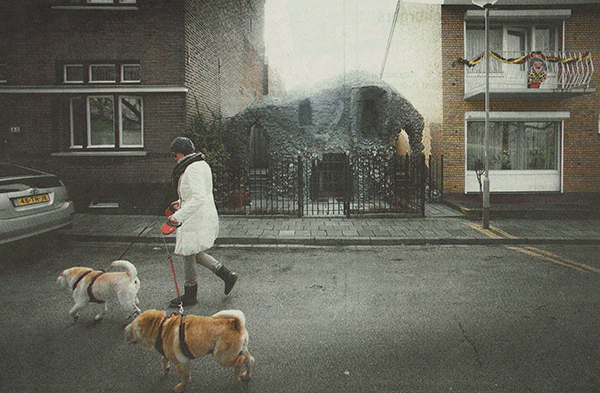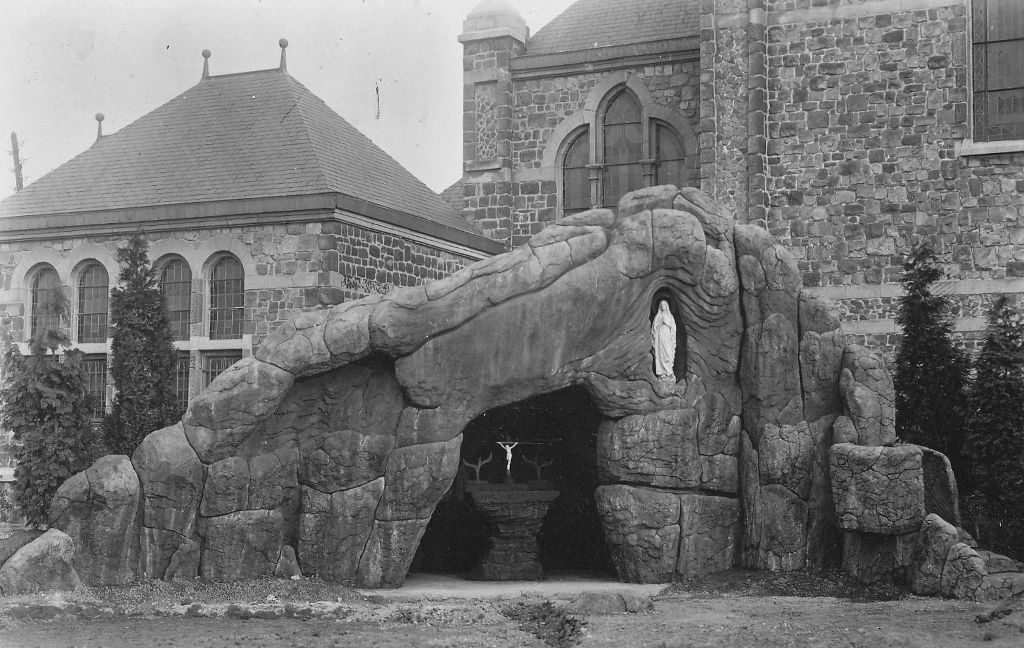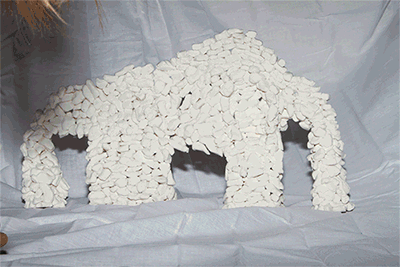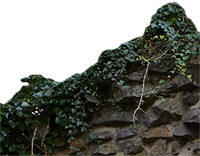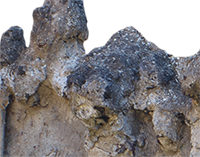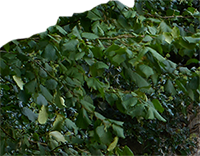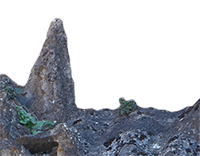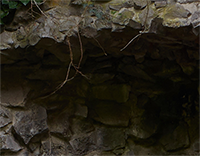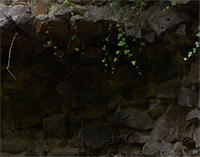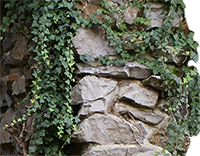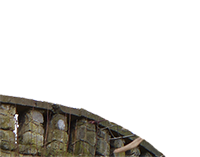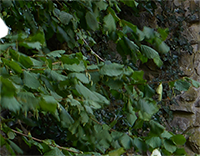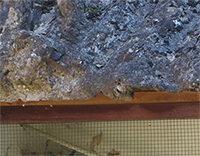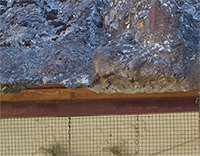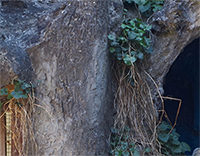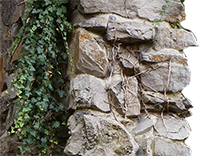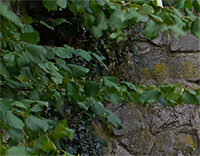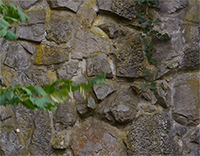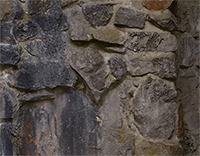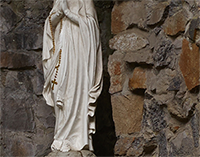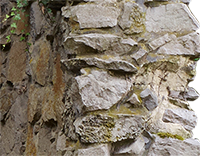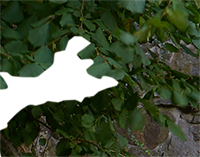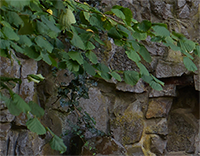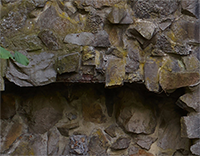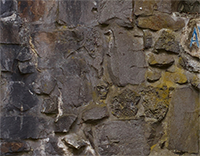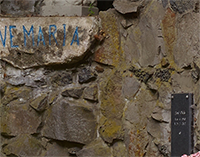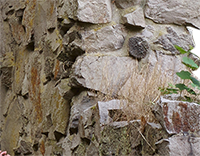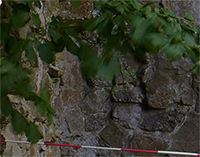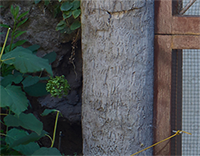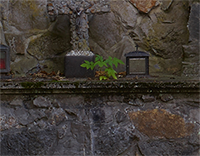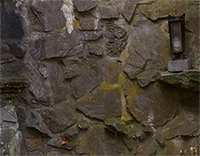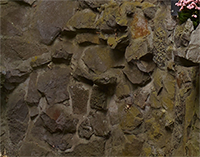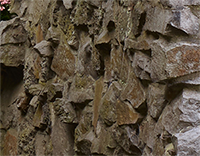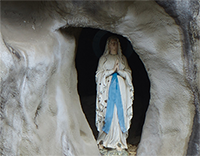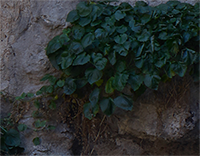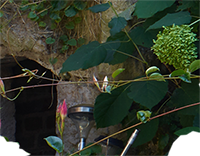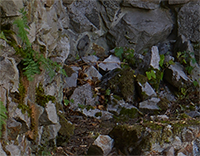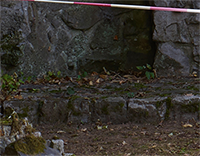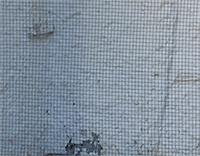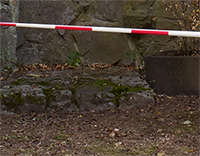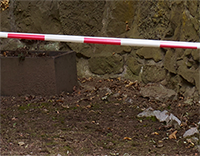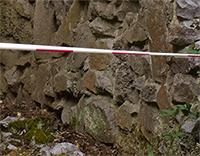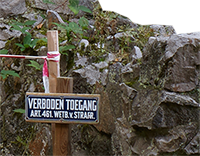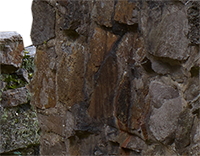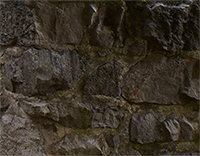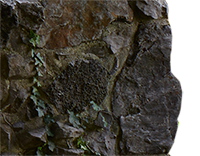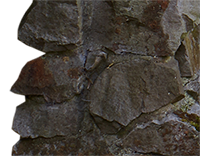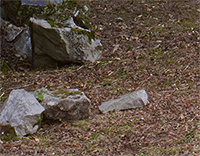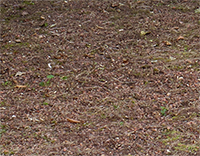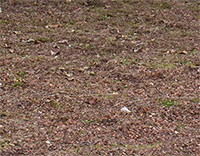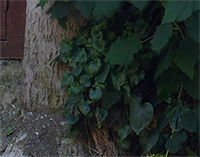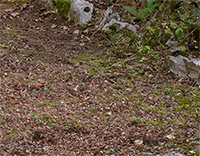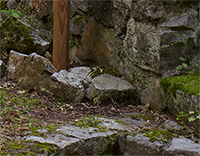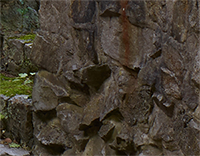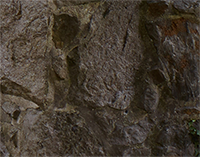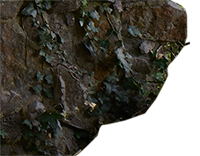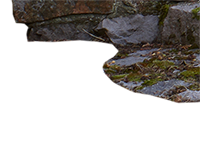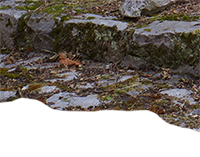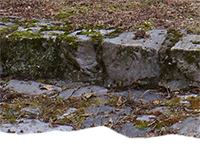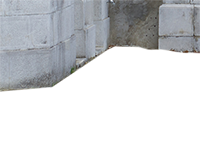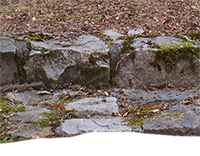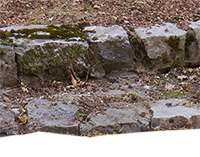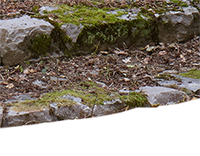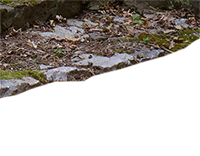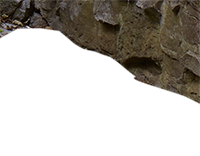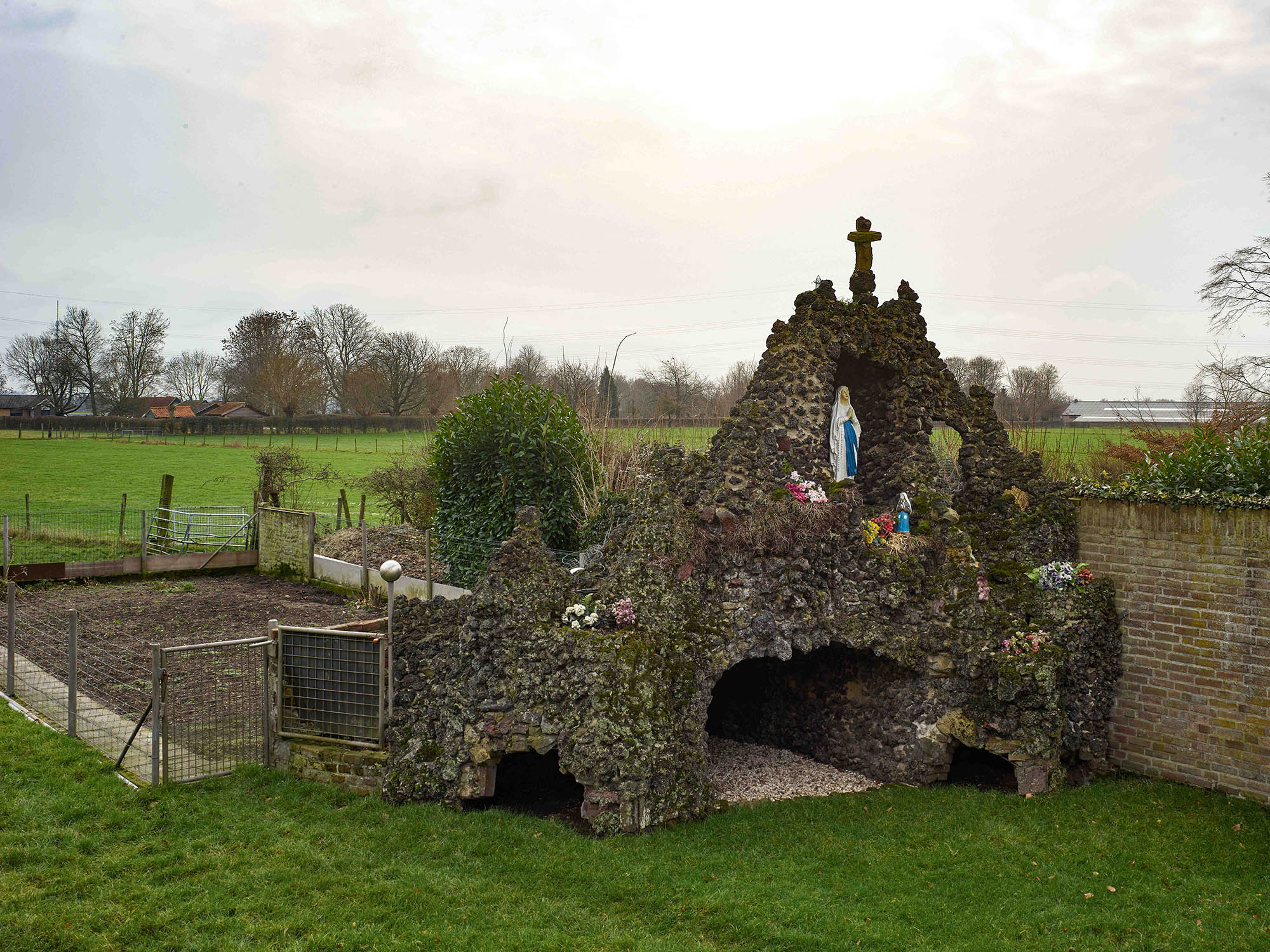
Grotto in the backyard of the Habets family in Arensgenhout, built around 1950 with sintels ("slags") from state mine Maurits. Presumably the 62th grotto built by opa Habets.

Grotto in the Kookstraat in Meerssen, built around 1910 with silex ("flints") from the neighbouring mines. This grotto was founded by Helena Stevens.
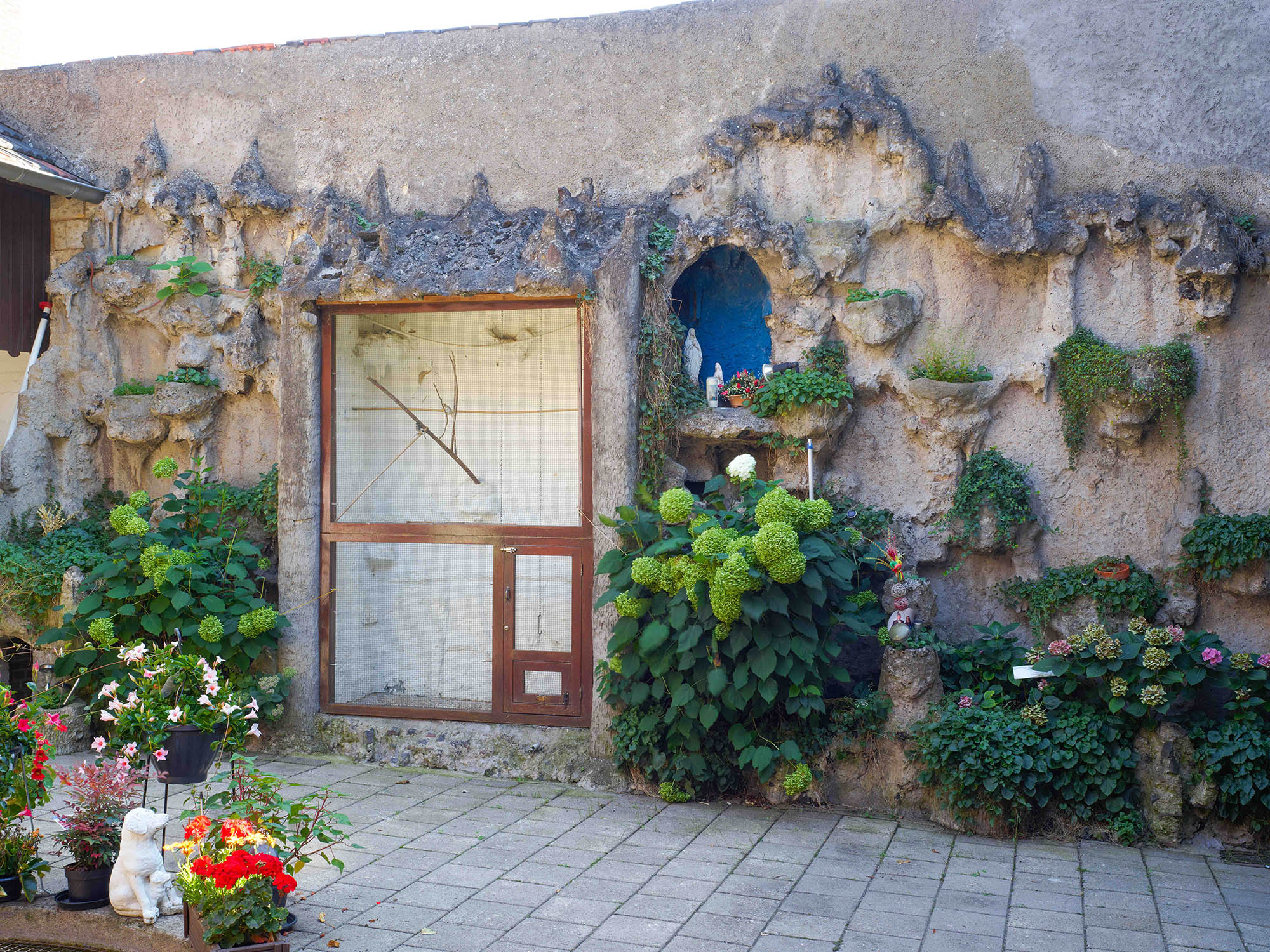
Cementrustieke ("rustic cement") in the backyard of the Van Wel family in Gronsveld. The construction of this grotto was commissioned by mayor Spauwen and was built in the crisis years by unemployed villagers.
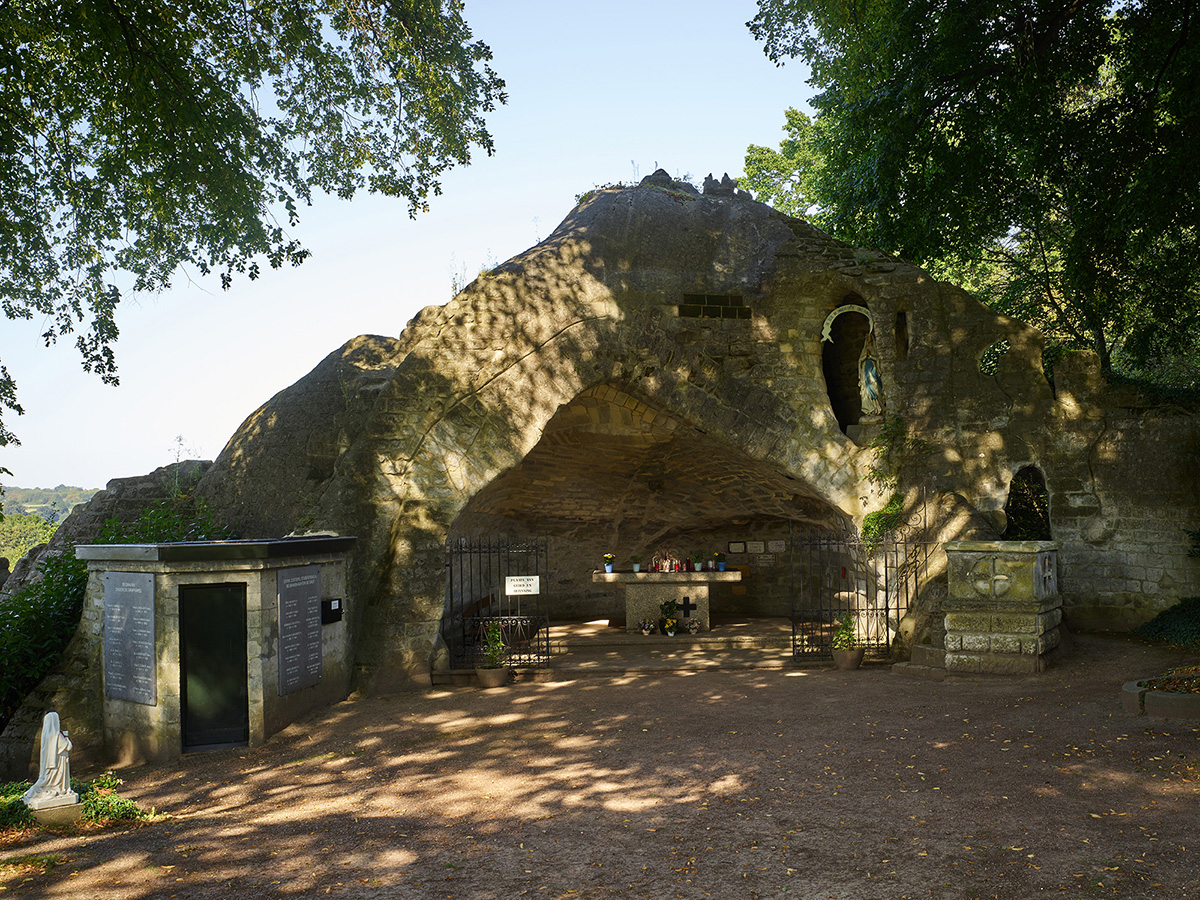
Grotto in garden of the mission house in Cadier en Keer. This grotto was built around 1892 with mergel ("marl") blocks from the neighbouring mines.
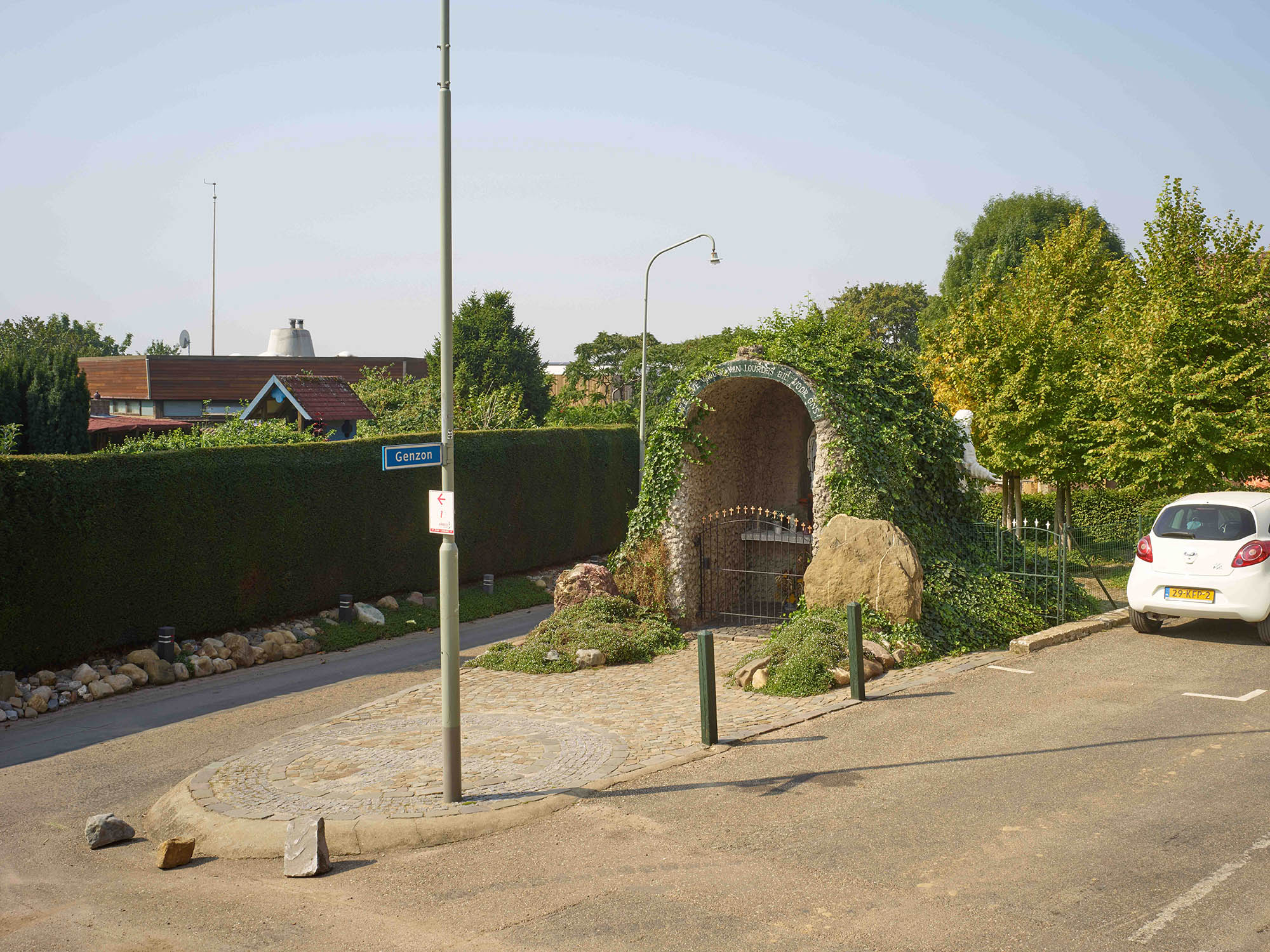
Grotto in Genzon, founded by 'grandma Klinkers' and built around 1900 with sintels ("slags").
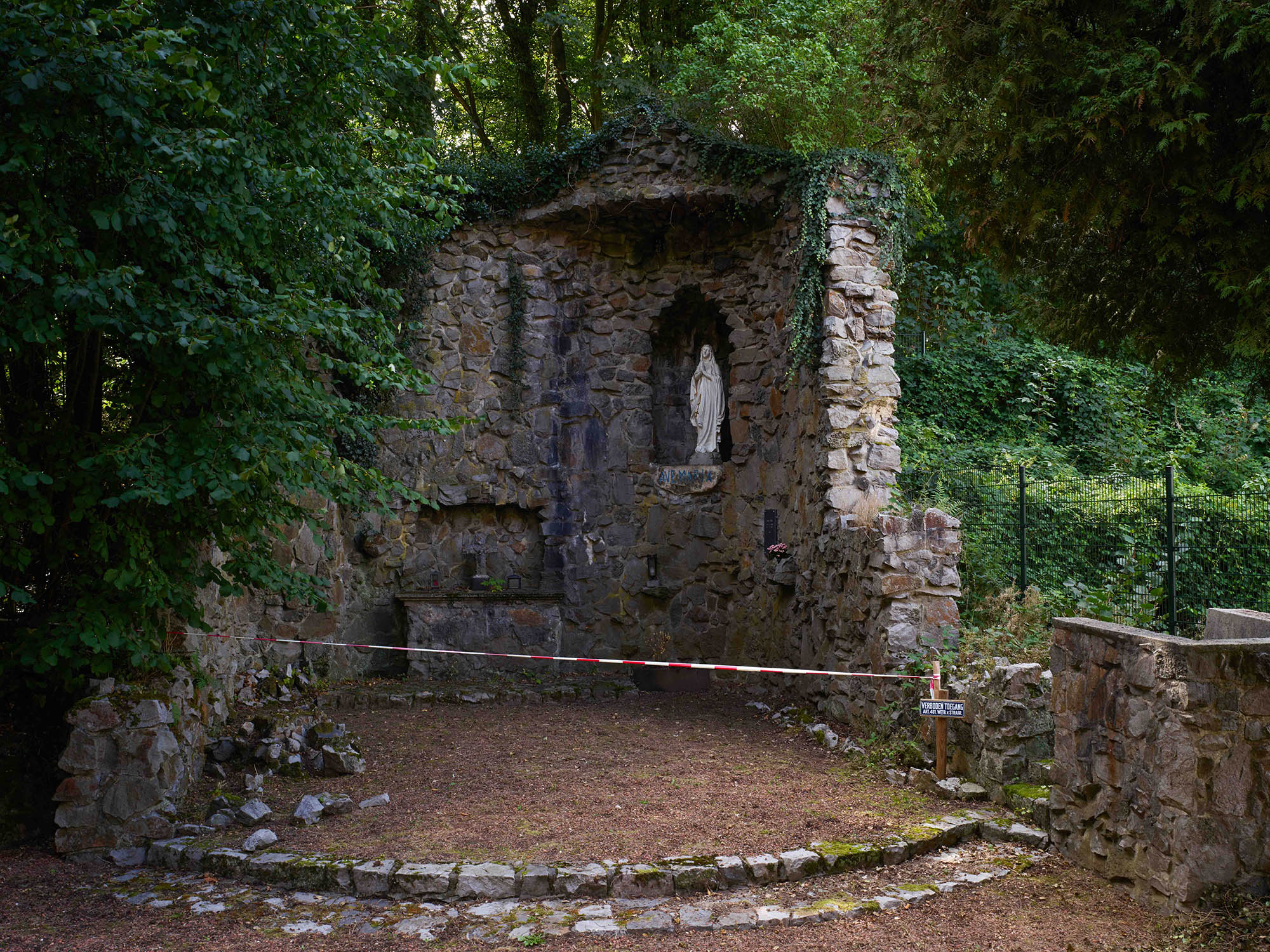
Grotto in Haanrade, built around 1940 with mine stones.

Cementrustieke ("rustic cement") grotto in Kaalheide, built in 1938.

Grotto in monastery garden of Priory Nazareth in Tegelen, built around 1875 with sintels ("slags") from the neighbouring mines.

Front view Grotto in monastery garden of Priory Nazareth in Tegelen.
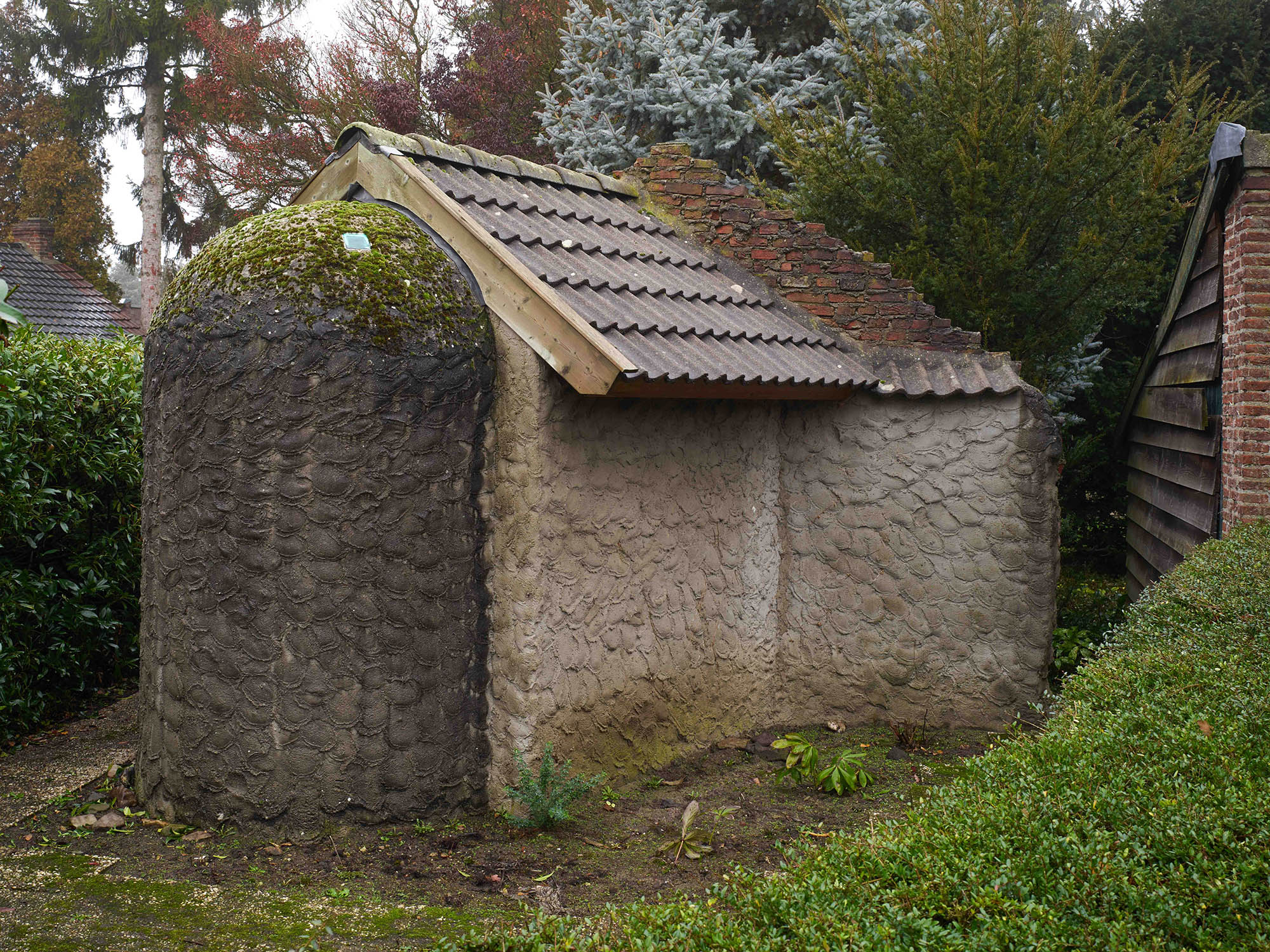
Back view Grotto in monastery garden of Priory Nazareth in Tegelen.
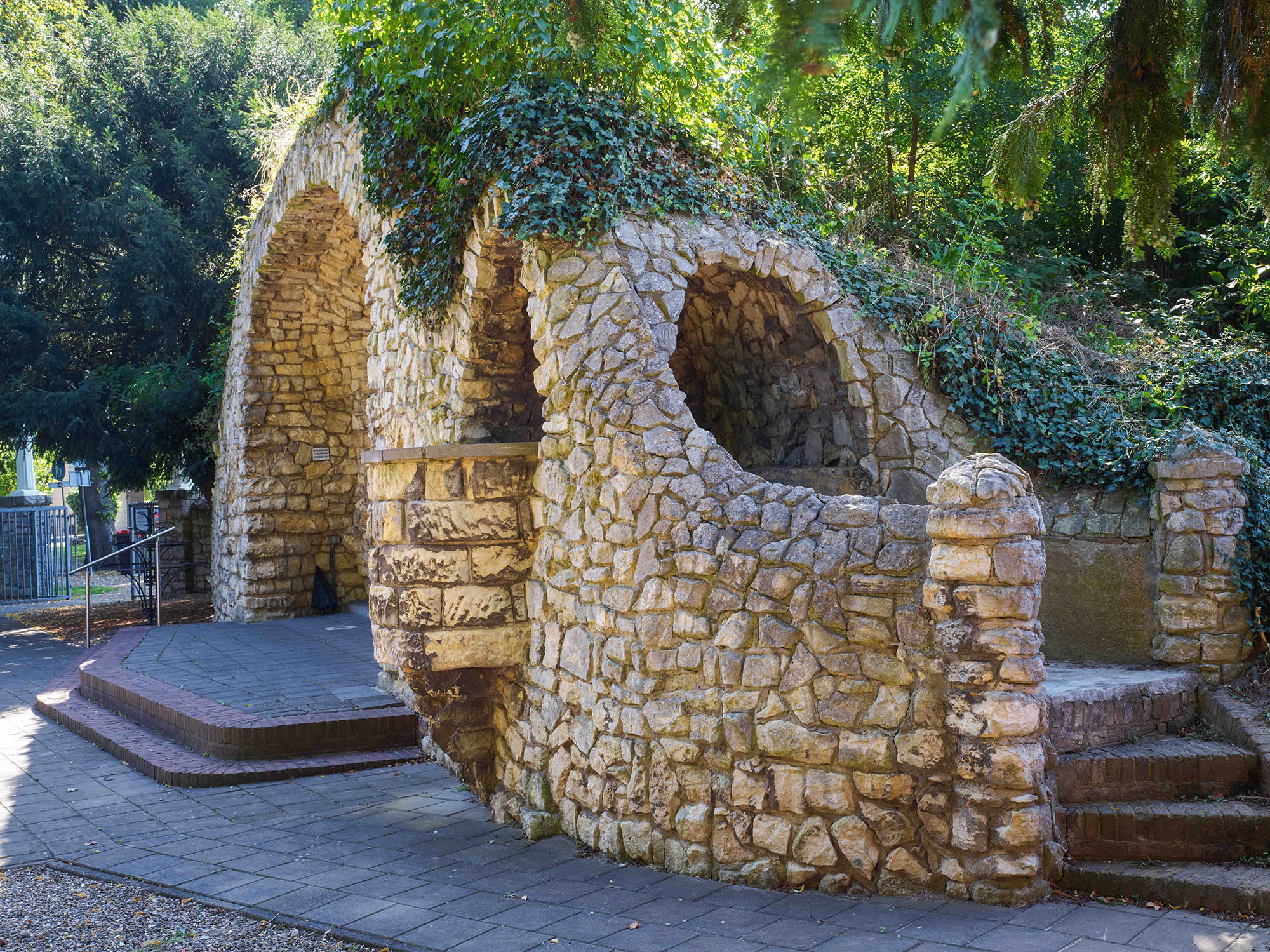
Grotto in Mariarade, built in 1929 with natuursteen ("stone rubble"). The grotto was designed by mining engineer L. Schlösser.

Grotto in the garden of Huize Overbunde in Bunde that was built around 1900 with sintels ("slags") from state mine Maurits.
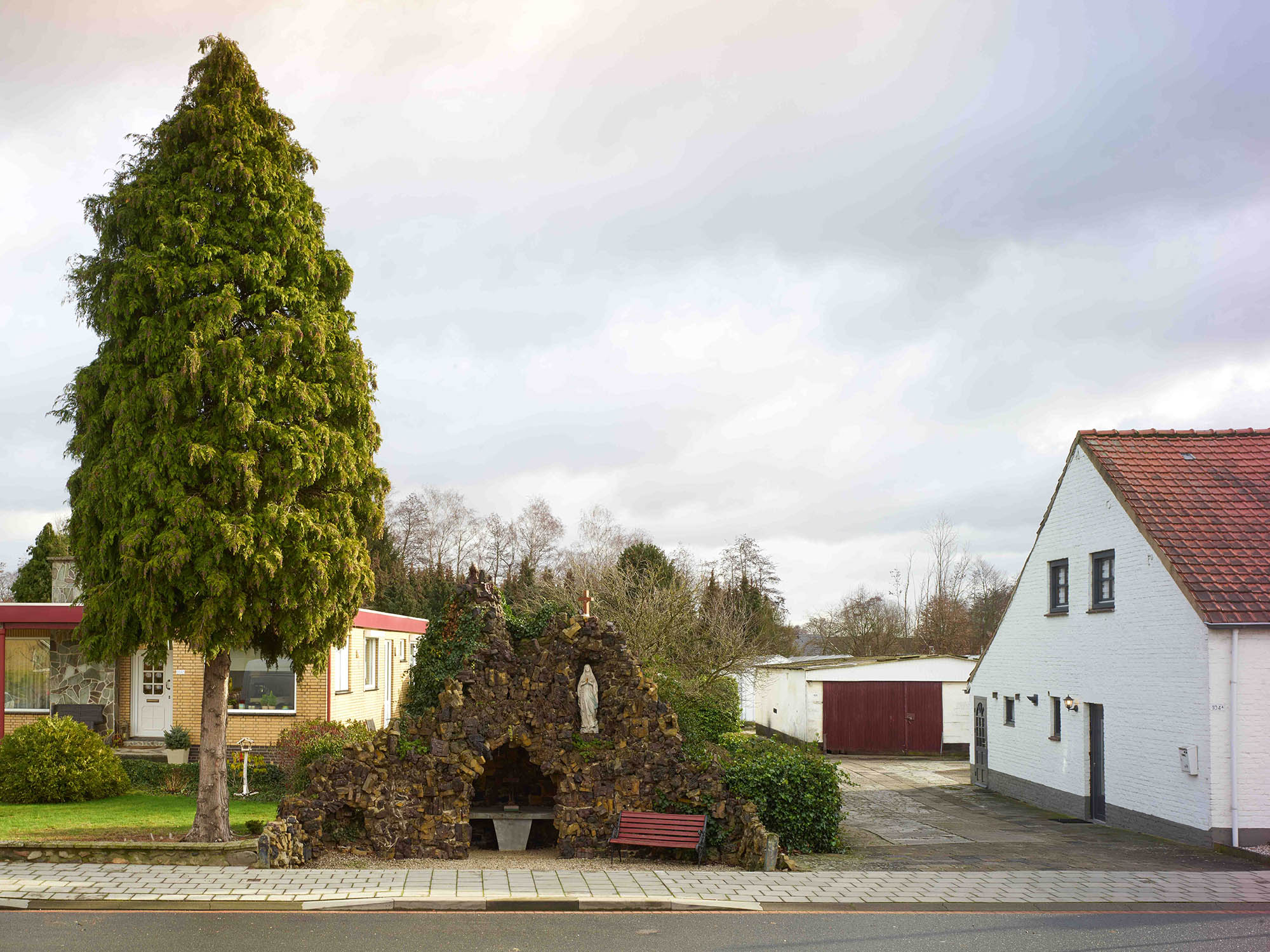
Grotto in a front yard in Heide that was built by opa Habets. The grotto is made of misbaksels ("place bricks") from the neighbouring brick kilns.
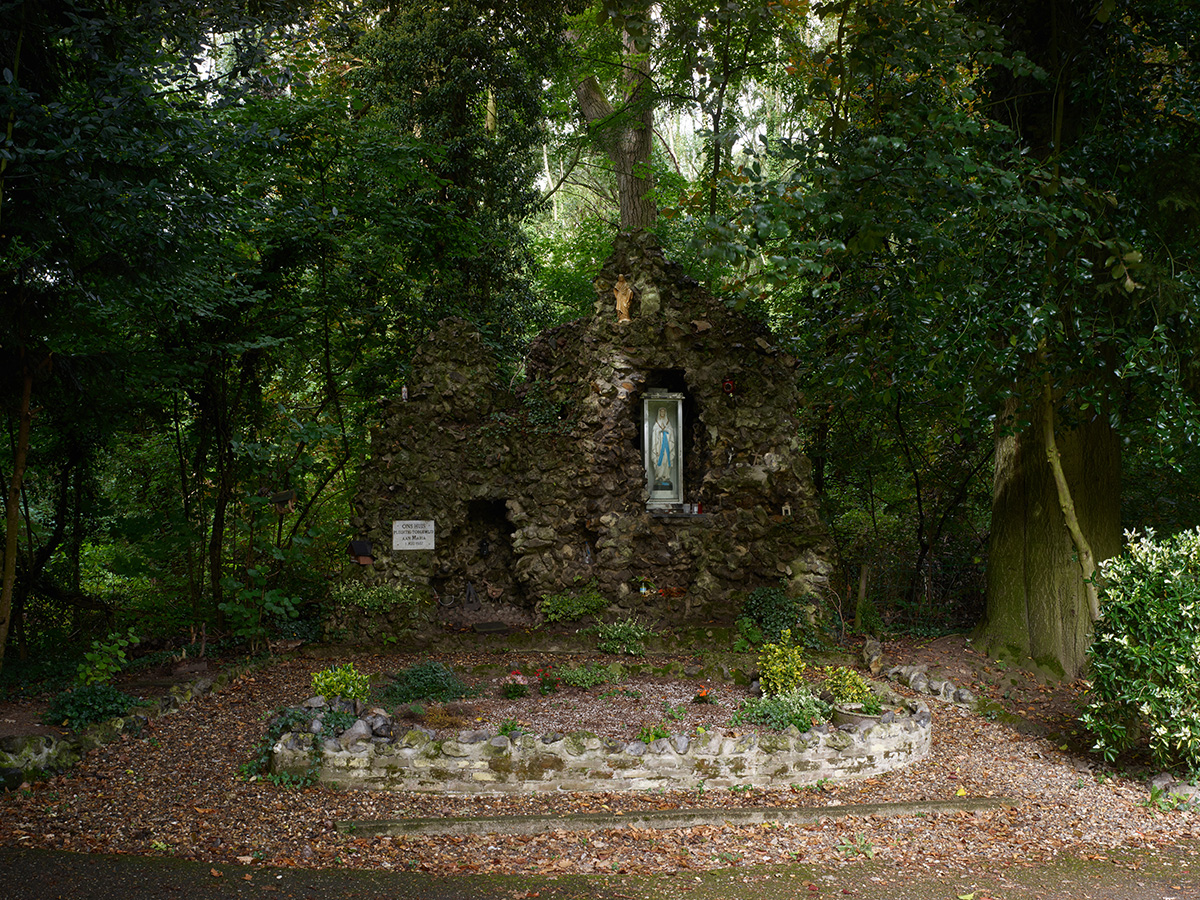
Cementrustieke ("rustic cement") grotto built in 1927/28 in Amby.

Cementrustieke ("rustic cement") grotto built in 1954 in Simpelveld.
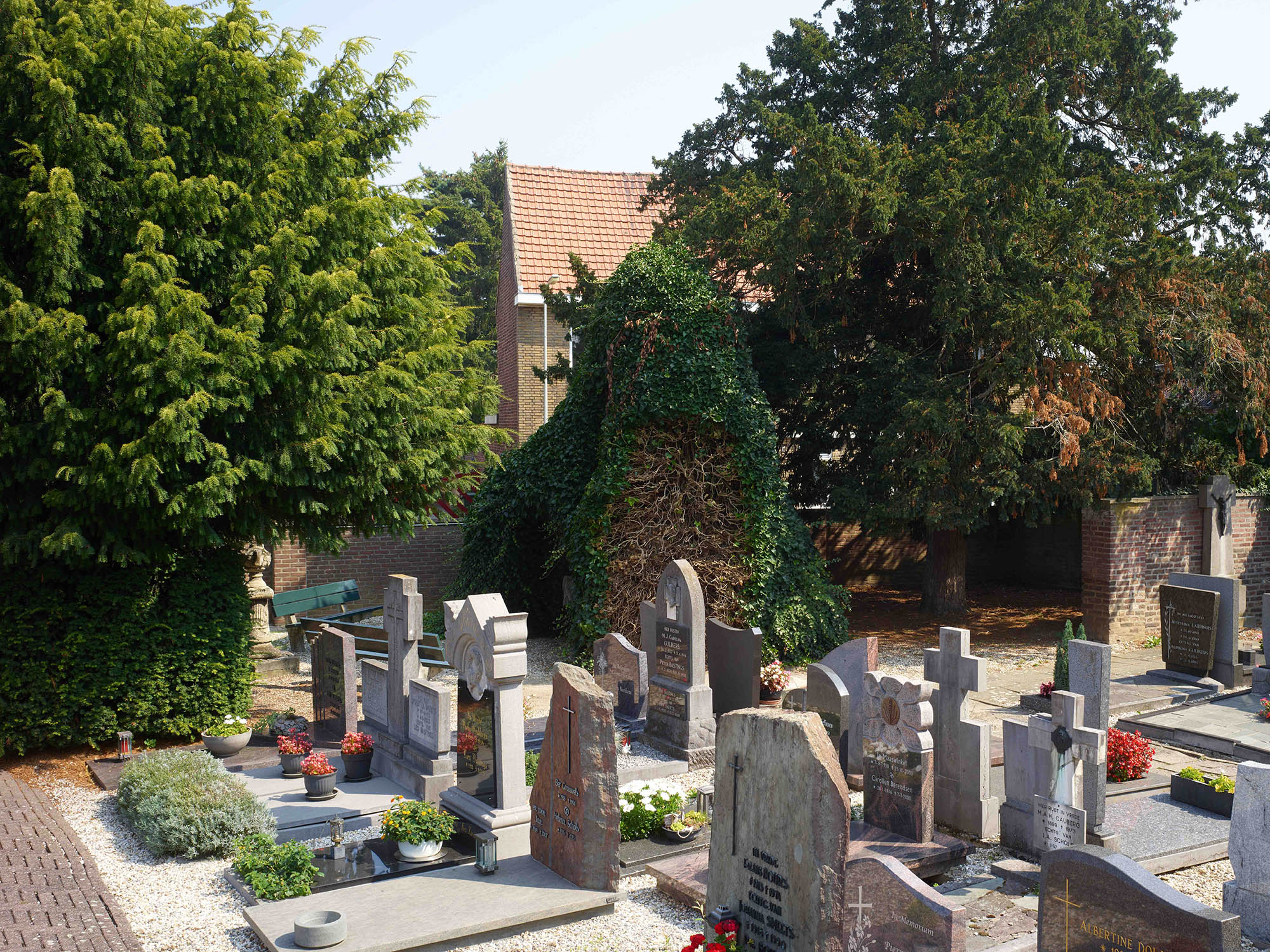
Grotto in Itteren, built with sintels ("slags"), year of construction unknown.
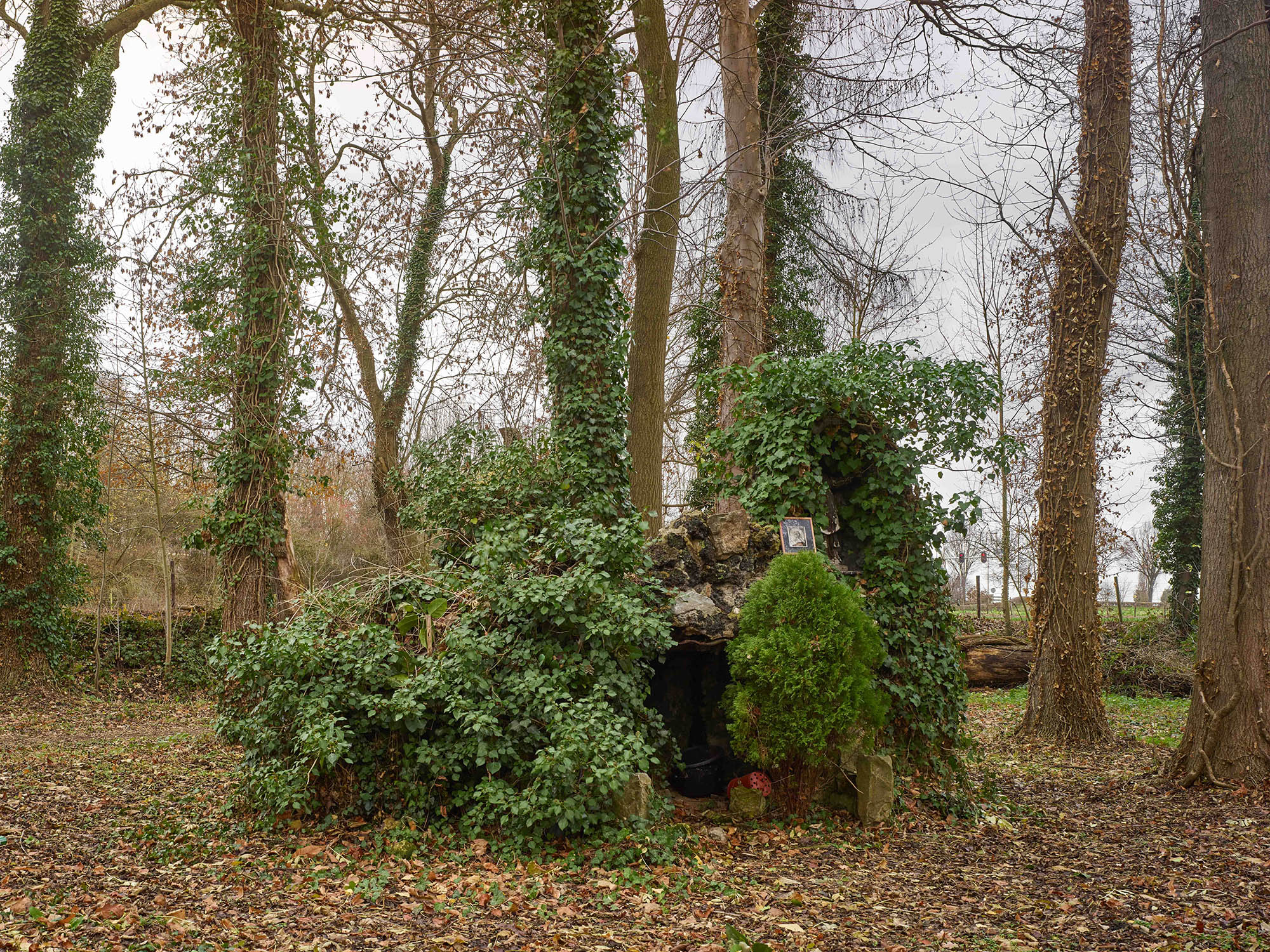
Neglected grotto built with misbaksels ("place bricks") in Doenrade, year of construction unknown.
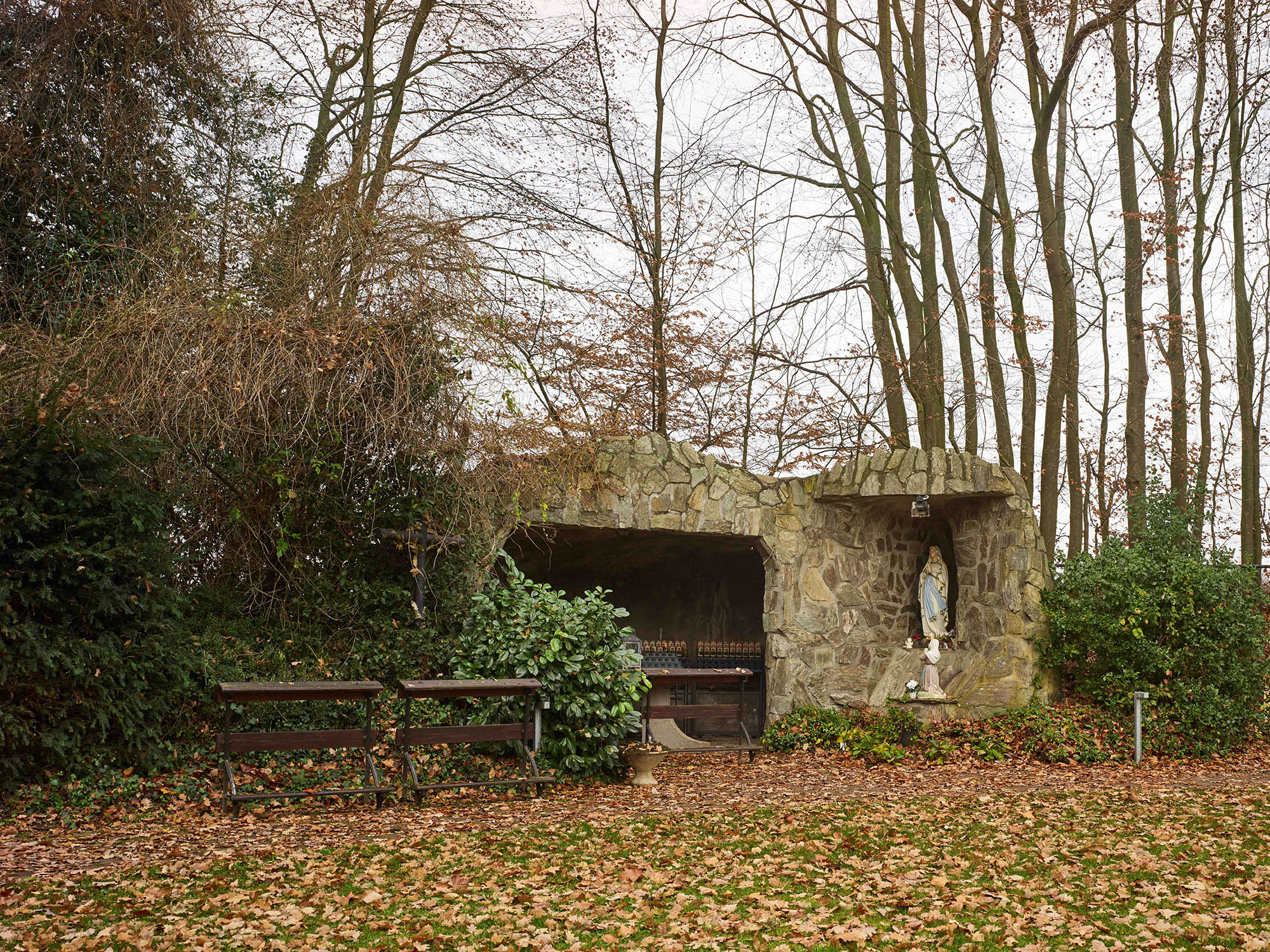
Grotto in Munstergeleen built in 1985.
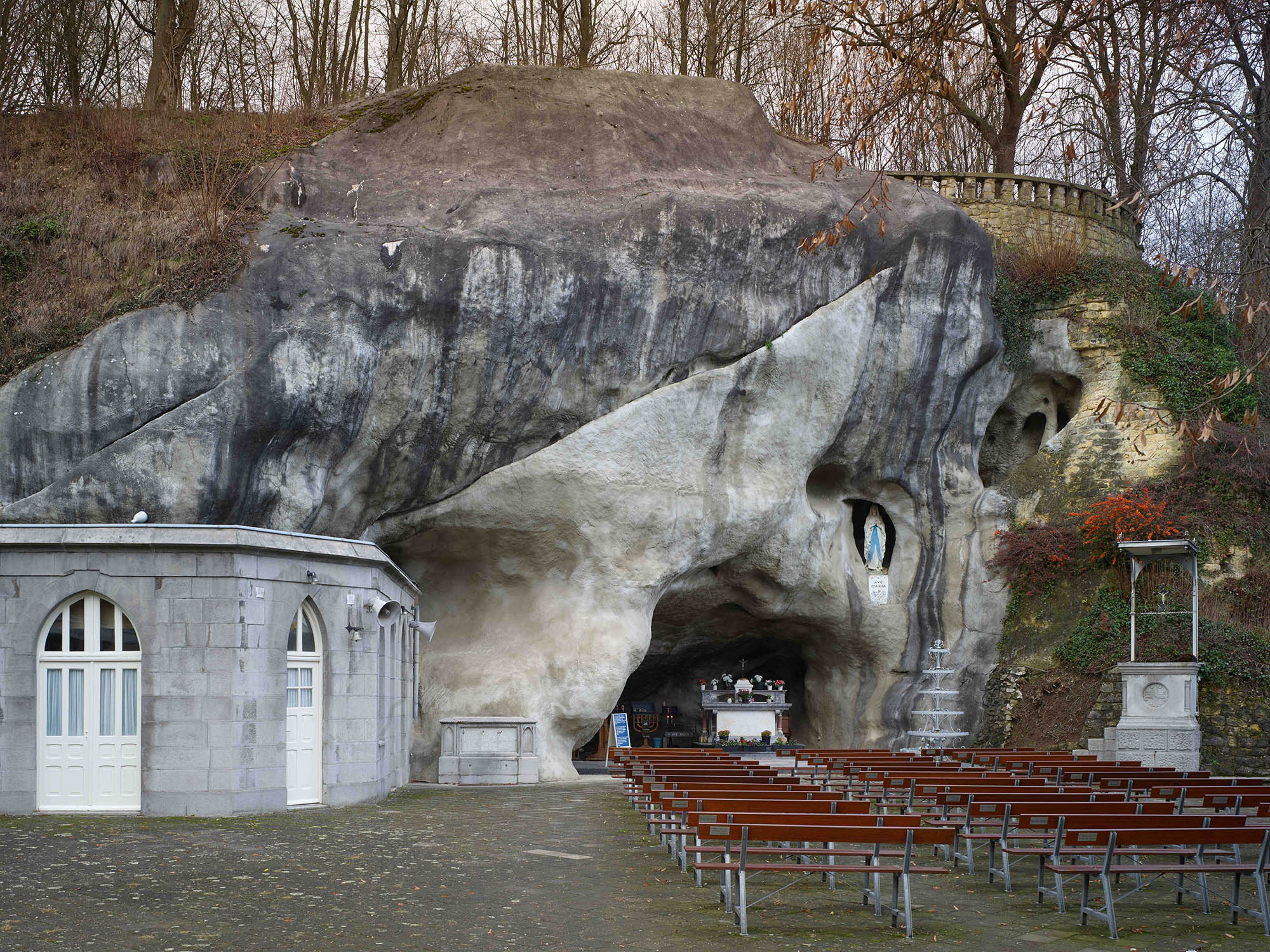
Cementrustieke ("rustic cement") grotto in Valkenburg, Cauberg built in 1926 under supervision of sculptor Jos Eymael.
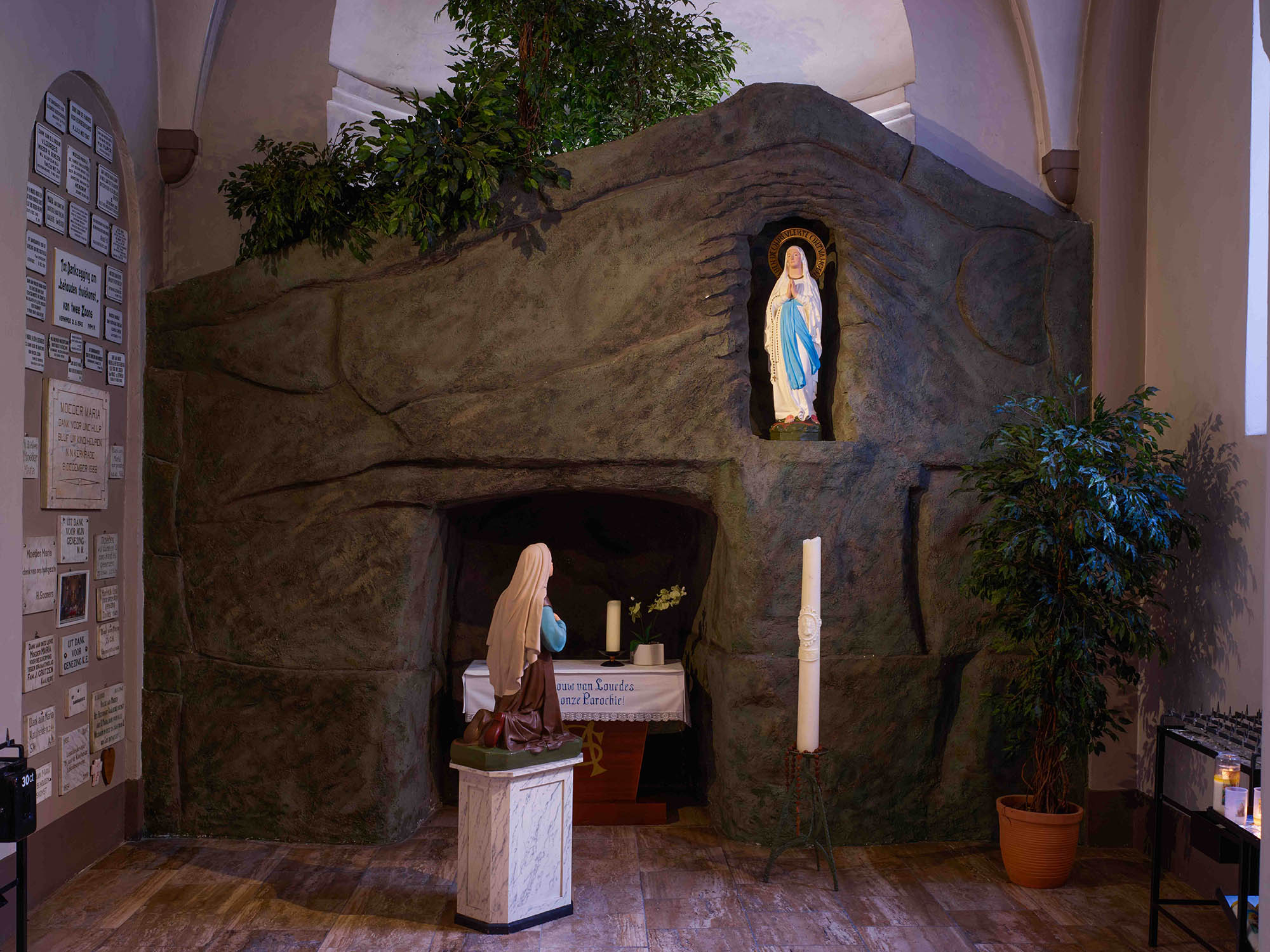
Indoor grotto in Kaalheide, this grotto was originally constructed in 1932 with stretched linen on which stone textures were painted. During renovations in the 80's this linen was replaced with this cementrustieke ("rustic cement") exemplar.

Grotto in Banholt built in 1911. The construction of this grotto was initiated by then rector August Kengen and local contractor Jos Kempeners. This grotto is constructed with silex ("flints") from the Banholter Grubbe were they had been selected by the expert eye of Kengen who also was an amateur archaeologist.
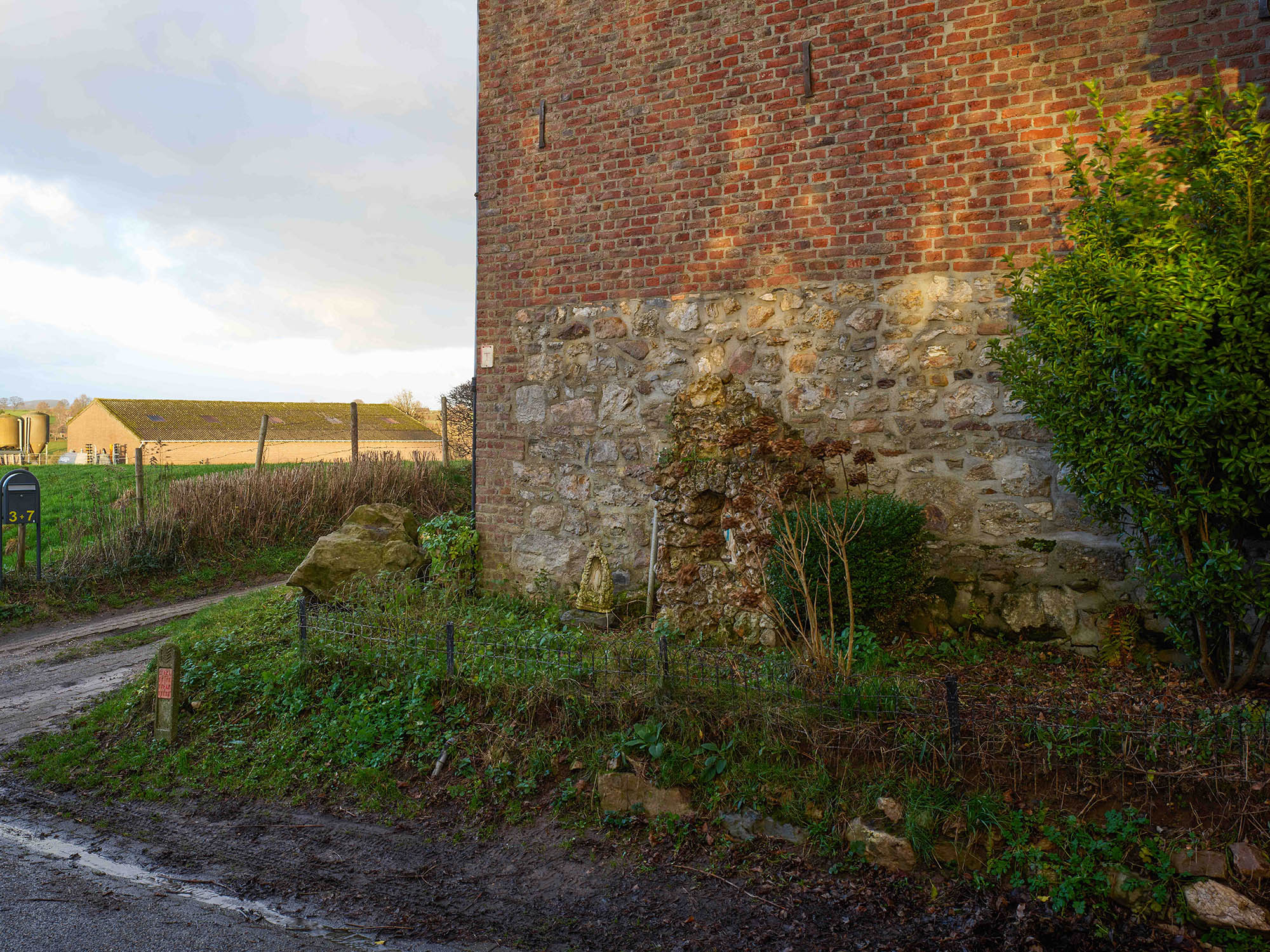
Mini grotto in Mechelen.

This grotto constructed in the mountainside of a lime quarry in Eijs also functioned as a bomb shelter during WWII. The grotto was constructed by villagers from Eijs that worked in the coal mines, this grotto was the emergency exit of one of these mines.
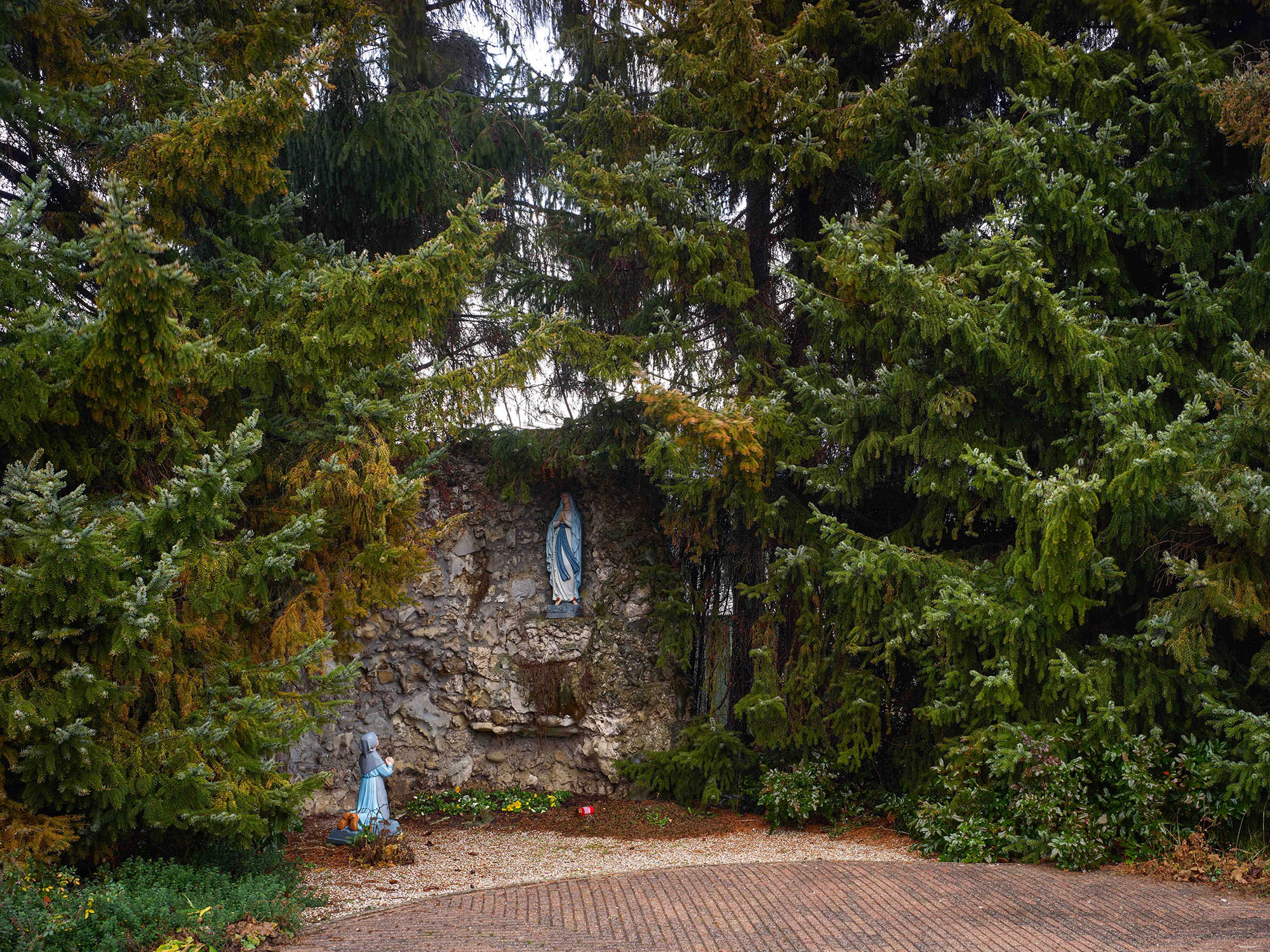
Grotto in monastery garden of the Missiezusters van de Oblaten van O.L.V. Assumptie in Hulsberg. This grotto was built with silex ("flints").
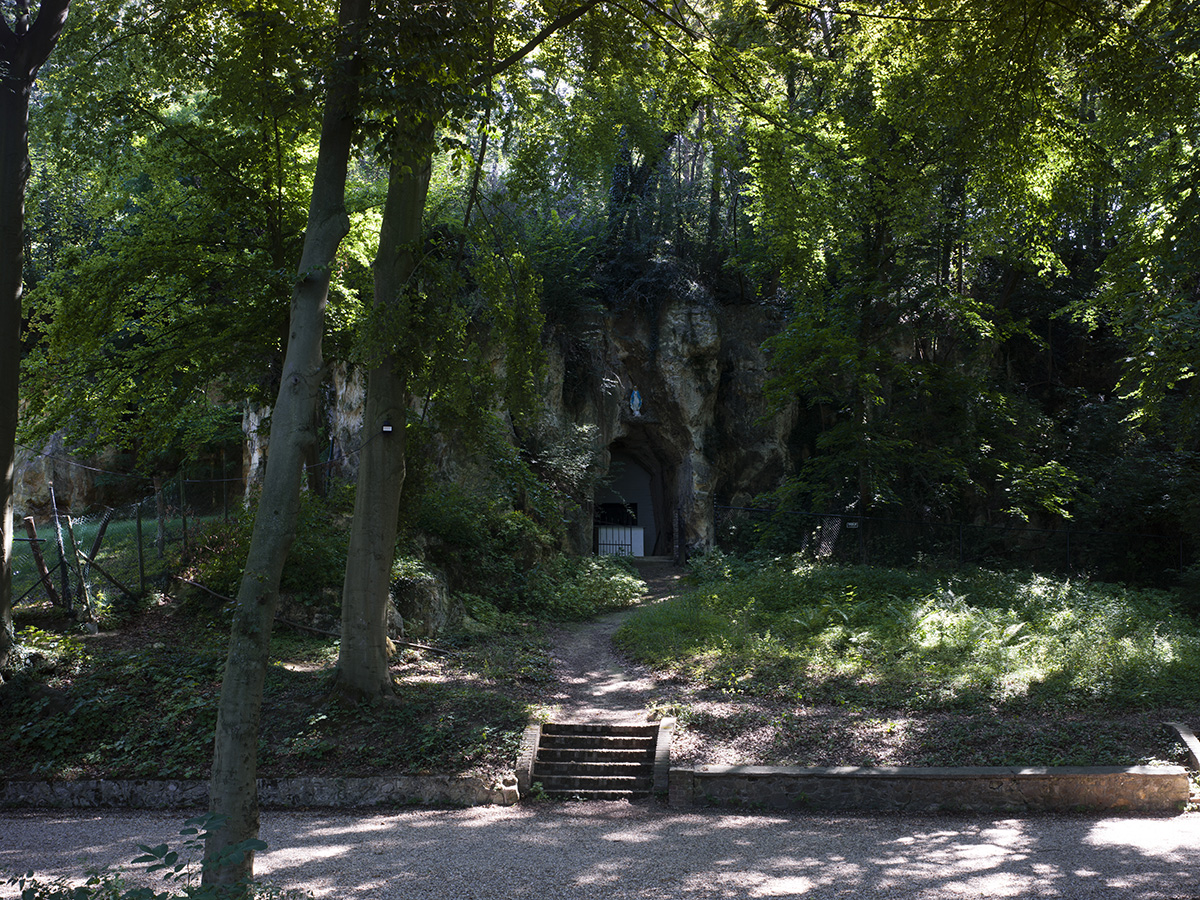
Grotto in mergel (marl) quarry in Cadier en Keer. Year of construction unknown.
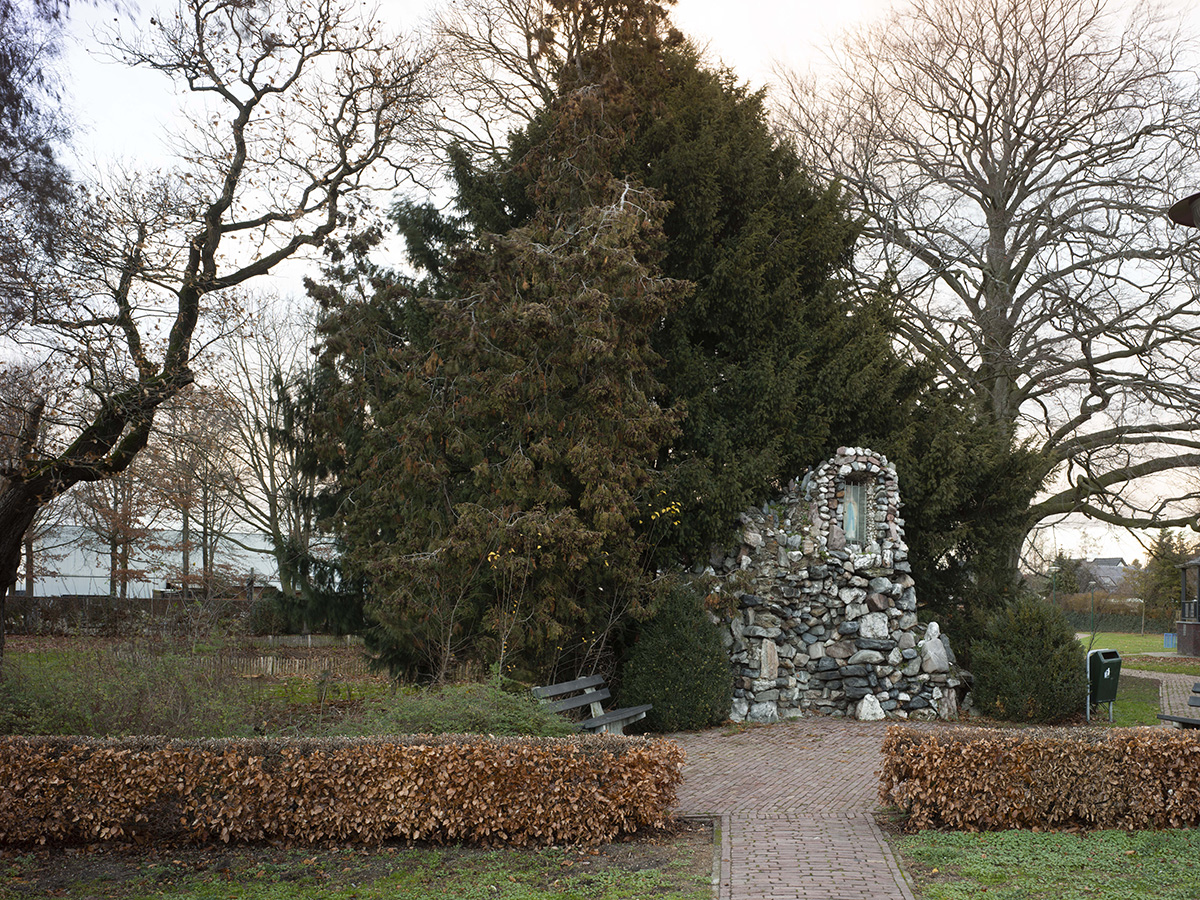
Grotto in Luykgestel. Year of construction unknown.

Grotto in Weebosch, this grotto was commissioned by pastor J. Panken to a mason from Bergeijk in 1935.
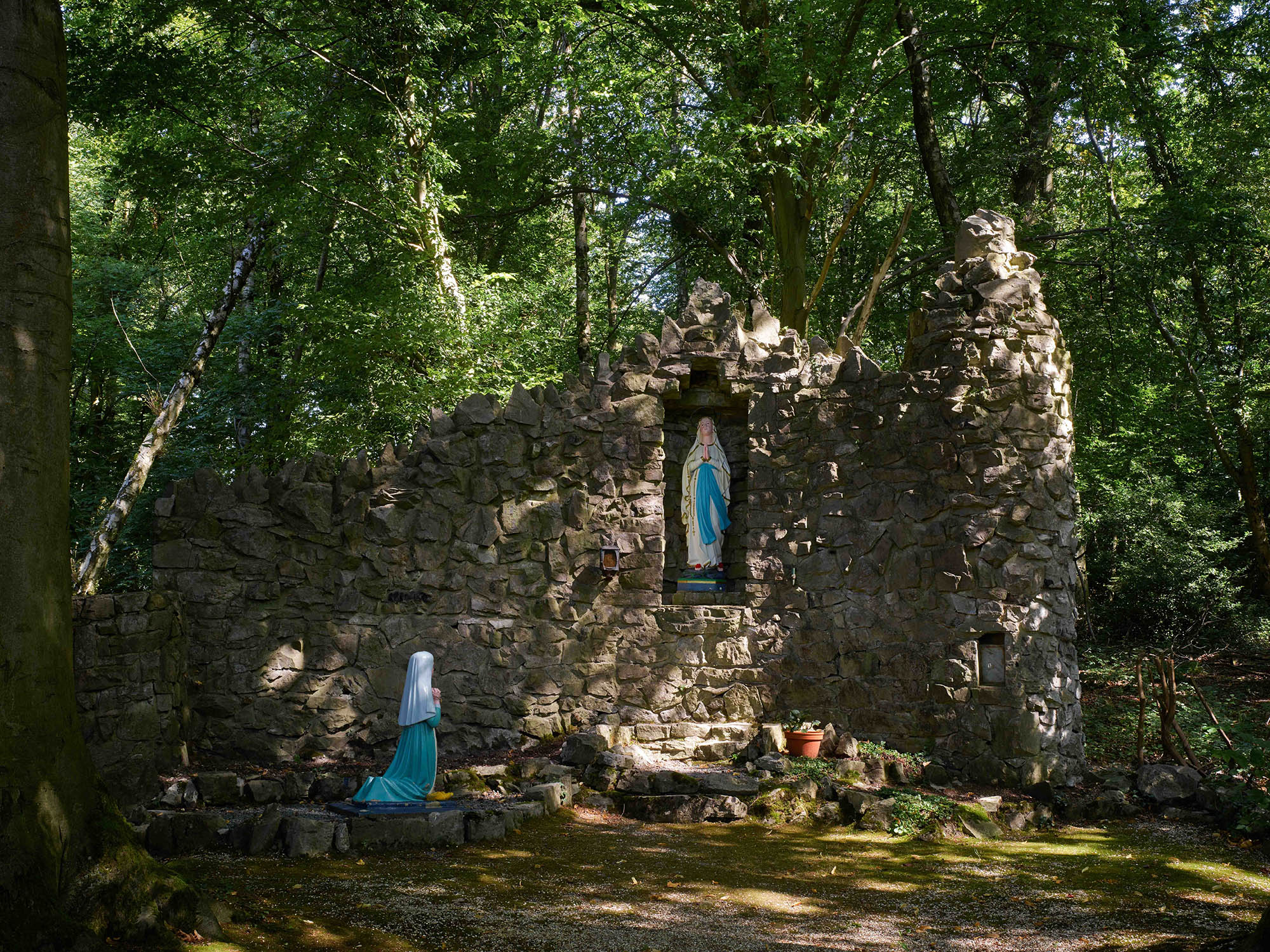
Grotto in Vaals, this grotto was built in 1934.
During the interwar period replicas of a French cave started to appear all over Europe. Building your own Lourdes cave became a trend after the Catholic Church endorsed veneration of the Blessed Virgin Mary following Marian apparitions in Lourdes in the south of France and peeked after Pope Leo XIII had his own replica of the cave built in the garden of the Vatican. Especially in Belgium and the south of the Netherlands the self-build grottos appeared in great numbers.
Each copy of the Massabielle Grotto has its own personalised architecture. Additional to the grottos built in monastery and church gardens, many of them were built in front and backyards of devotees that could not afford a pilgrimage to France. The do-it-yourself grottos were so trendy that Dutch and Belgian farmers union stores started selling prefab Lourdes grottos to meet the demand. Interested in how the builders scaped their vision of the wonder, we decided to document the Limburg self-builds before disappearing.
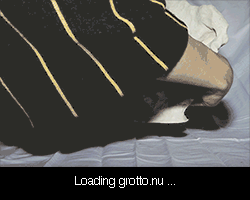



 click and reveal grottos!
click and reveal grottos!




































